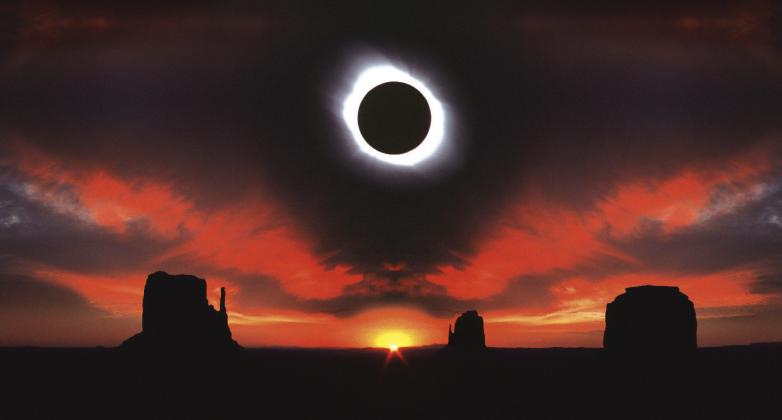There will be a total solar eclipse on April 8. Scientists are estimating that the eclipse will last four minutes and 27 seconds. That is almost double the time of the Great American Eclipse of August 21, 2017.
Approximately 20 million people from Oregon to South Carolina were able to witness the 2017 event. It is estimated that the amount of people able to witness this upcoming one will be millions more than that last one.
The arc of the upcoming eclipse will cover many states. It is estimated that the totality will begin in Texas at 1:27 p.m CDT. and will end in Maine at 3:35 p.m. EDT. Two of the cities in the path of the eclipse are Dallas and Fort Worth, Texas. That is a short drive for any Oklahoman wanting to witness the miraculous event.
Potential viewers need to be aware of the dangers of watching the eclipse, though. Because of the sun’s intense brightness, looking directly at it for just a few seconds can cause permanent damage to the retina - the part of the eye neededforvision.Exposureto the sun during a solar eclipse withoutproperprotectioncan cause retinal burns.
Since the retina has no sensitivity to pain, the effects of retinal damage may not appear for hours. This means there is no warning that an injurytotheeyehasoccurred.
Since much of the sun is covered during a total solar eclipse, a person might be tempted to stare at it in awe. However, it is possible to suffer serious and permanent eye damage by looking at a solar eclipse, no matter how beautiful. There is no known treatment to restore vision, either.
Children are more susceptible to eye damage from a solar eclipse. This is because young eyes transmit more light through to the retina than adult eyes.
For anybody wishing to view the event, be sure to adhere to the safety precautions. Never look at the sun directly using telescopes, binoculars or cameras. Wearing eclipse glasses does not protect the viewer from damage while using optical aids.
Be sure to wear only ISOcertified- safe solar eclipse glasses and viewers. Keep the glasses on while the sun is not yet fully eclipsed.
Once the sky turns dark and the solar corona appears, viewers can take off their eclipse glasses or viewers for a short period. For more information on how to safely view the eclipse, visit the American Astronomical Society website at eclipse.aas. org/eye-safety.

